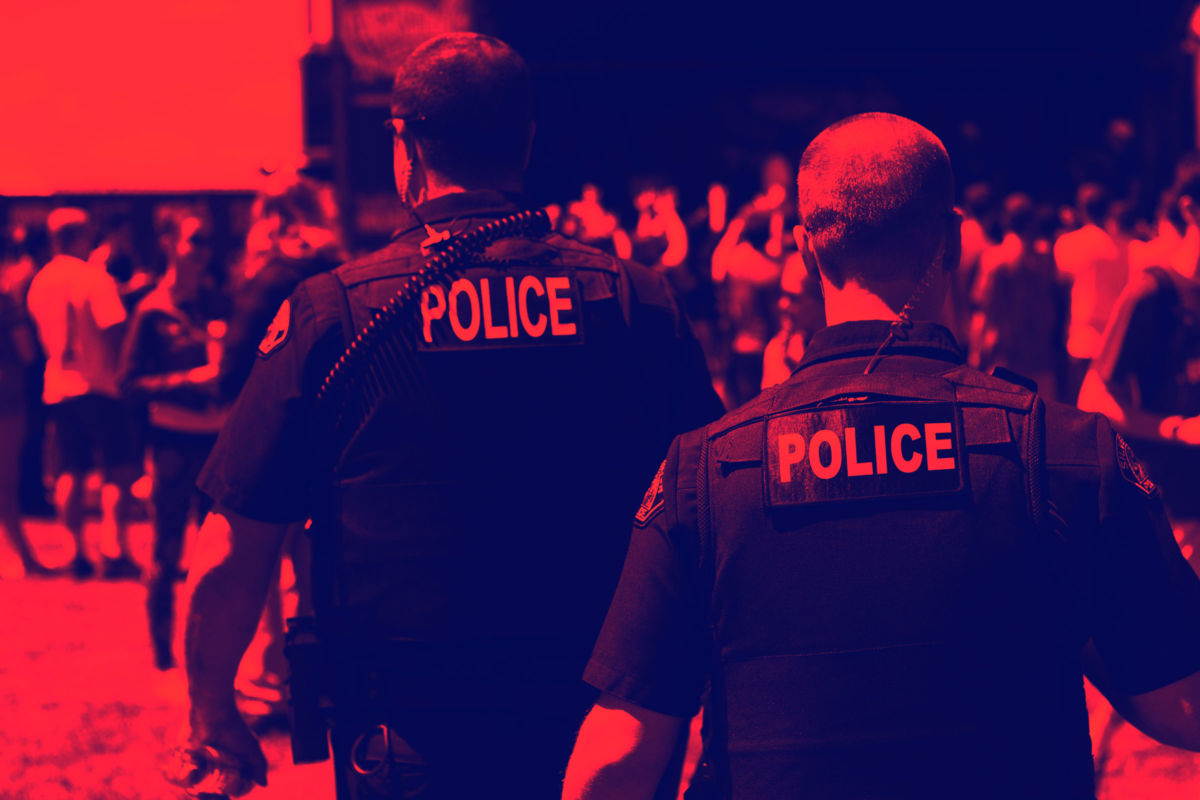On January 29, 16-year-old Dnigma Howard was asked to leave Chicago’s Marshall High School after using her cellphone in class. Her father, Laurentio, was at the school to pick her up when two police officers arrived and violently attacked her in front of her father without provocation.
School resource officers Johnnie Pierre and Sherry Tripp lied about punching, Tasing and stomping on Howard, as well as dragging the child down a flight of stairs. They falsely charged Howard with attacking them and tried to send her to jail. Even more disturbing is the fact that the officers brazenly lied about their criminal actions despite all the people, both students and adults, who witnessed the attack. Luckily, camera footage exposed the officers, because, as Howard said, “It was just my word against the court’s word.”
Howard’s father filed an amended federal civil rights lawsuit against the two officers, the city of Chicago and the Chicago Board of Education on April 11, after the school security footage showing Pierre dragging Howard down the stairs was released. The lawsuit states that “the City of Chicago’s lack of directives, oversight, and standards pertaining to its police officers in its schools has resulted in the violation of students’ civil rights and unnecessarily involved students in the criminal justice system.”
It also states Chicago police officers are assigned to the school “without proper recruitment, training, directions, or supervision.” Many organizations and individuals have been calling for reform of policing in Chicago’s schools, from the Office of Inspector General, to concerned community members, to various news agencies. Chicago is now under a federal court order to address the problems in its highly troubled police department, including the way officers interact with students.
Pierre, the police officer filmed dragging Howard down a flight of stairs in the school, has more use-of-force incidents in his record than 96 percent of his colleagues, according to data from the Invisible Institute database. Yet, he was assigned to Marshall High School on Chicago’s West Side.
According to the database, out of 20 use-of-force incidents recorded for Pierre, 15 were against Black men, four were against Black women and one was against a Latina woman. Pierre also has 18 civilian allegations on his record, reflecting the number of times a civilian in Chicago filed a formal complaint after interacting with him. The allegations include use of force resulting in injury, illegal searches, conduct unbecoming off duty, and four false arrests — including two against Black women.
Chicago spent more than $500 million on police misconduct lawsuits from 2011-2018, and taxpayers will likely be footing the bill for this latest one, too. According to the Chicago Reporter, the city settles a police misconduct lawsuit almost every two days on average, and is borrowing money to pay for settlements when payouts exceed what it has already budgeted for them. According to the Shriver Center, which focuses on poverty law, officers assigned to Chicago public schools racked up more than $2 million in misconduct settlements from 2012-2016.
Howard’s case has reignited the national debate about the presence of police in schools. Sixty-seven percent of public high school students have a police officer at their school nationwide, according to data from the Urban Institute. Opponents point out the disparity in arrests of students of color, with recent federal data demonstrating that though Black students are only 15 percent of the enrolled population, “they make up nearly a third of the students who are arrested or referred to law enforcement.” Several high-profile incidents of police brutality in school, such as a middle school student being attacked by an officer while sitting at her desk, have underscored the need for change.
In 2019, a national coalition of educators called Black Lives Matter at School added a new demand to their platform: Fund Counselors Not Cops. Educator Jesse Hagopian explains, “We are now in a situation in America where there are 1.6 million children who go to a school that doesn’t have a counselor but that does have a police officer.” The movement continues to gain support: the National Education Association backs the call and voted to endorse a national Black Lives Matter at School week. The coalition also calls for an end to zero-tolerance discipline, replacing it with restorative justice models.
Watching Pierre pull a child down a flight of stairs in front of a crowd of people is a symbol of the power imbalance in Chicago, and clearly demonstrates the need for extensive community oversight of policing in schools.
If one wonders what slavery looked like, the images in this video are part of it: People in power attacking a defenseless child, whose father watches because he’s afraid he’ll be killed if he intervenes, and the attackers confidently lying about it despite a crowd of witnesses. Much of the Black community in Chicago descended from people who fled the violence of the South in the mass migrations. Generations later, the same images and experiences are repeating.
The Chicago police department states that Tripp and Pierre were removed from the school and have been reassigned to other parts of the district. Why weren’t they arrested or fired? Is pulling a child down a flight of stairs and then attacking her acceptable behavior in Chicago?
Rather than allowing its officers to engage in misconduct and forcing taxpayers to foot its bill, the Chicago police department must hold its officers to the same standards as the rest of society.
Join us in defending the truth before it’s too late
The future of independent journalism is uncertain, and the consequences of losing it are too grave to ignore. We have hours left to raise the $12,0000 still needed to ensure Truthout remains safe, strong, and free. Every dollar raised goes directly toward the costs of producing news you can trust.
Please give what you can — because by supporting us with a tax-deductible donation, you’re not just preserving a source of news, you’re helping to safeguard what’s left of our democracy.
